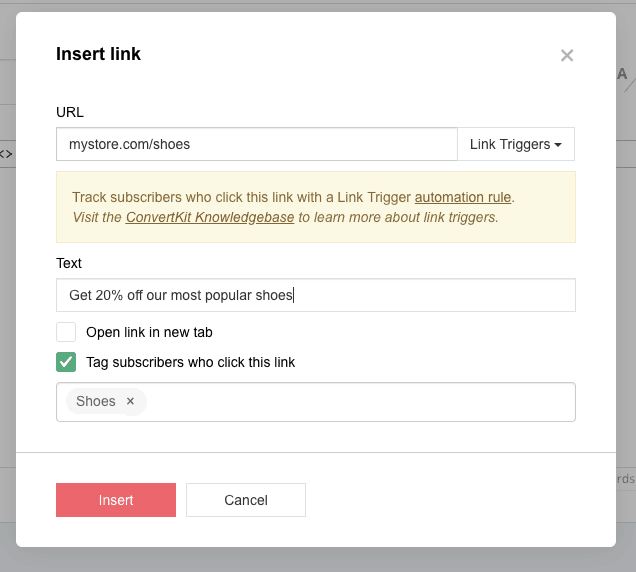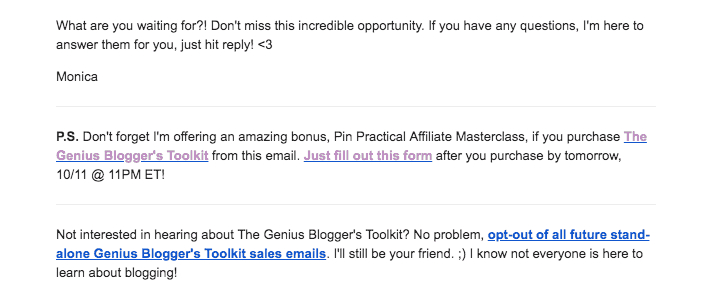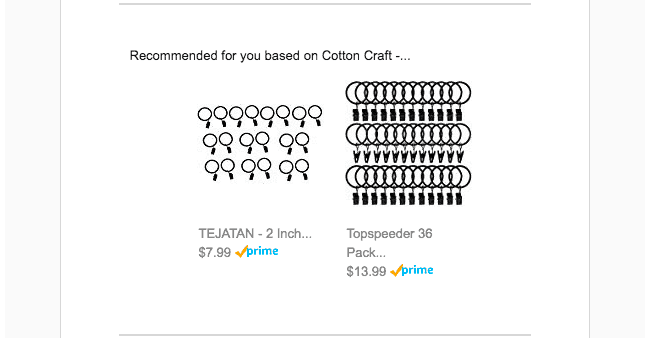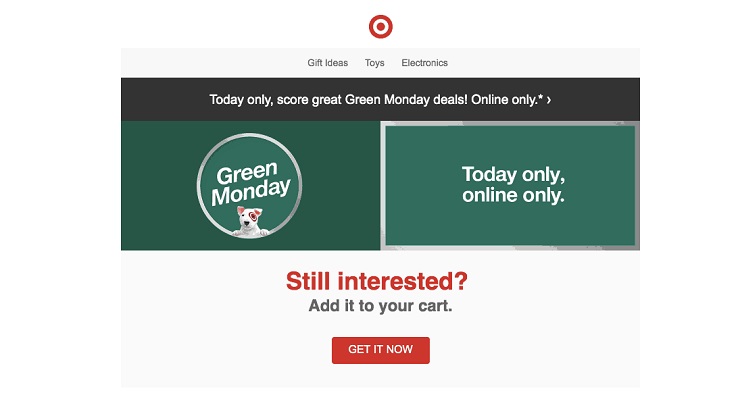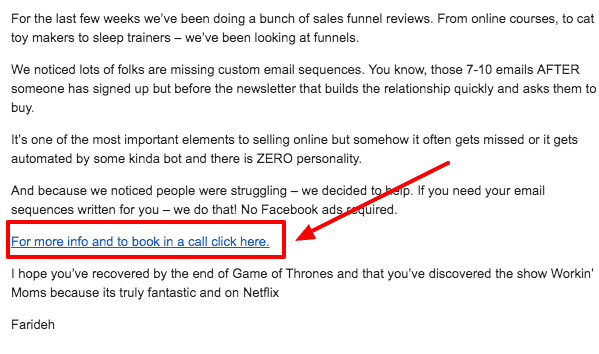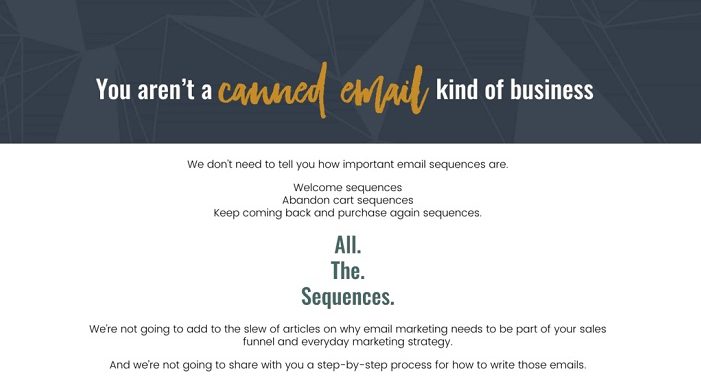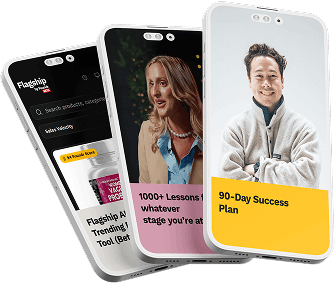Today, we’re excited to have the Master of List Building Stuart McKeown sitting down with Foundr to talk about how to make money with your email list.
When Stuart McKeown started Gleam.io, he and his co-founder set a goal of hitting $20,000 AUD in monthly revenue before they’d quit their jobs and go all in on the venture. Today, their company is bringing in 20 to 30 times that monthly revenue.
While many different factors (and a ton of hard work) went into reaching that milestone, email marketing played a major role in growing Gleam. Stuart himself has helped generate over 2 BILLION leads during his tenure as a digital marketer.
READ MORE: 3 Ways to Create a Facebook Sales Funnel That Will Convert Customers on Autopilot
FREE MASTERCLASS: How to Start a Tech Startup And Get Your First Customer In 60 Days
1. Track Your Email List
“If you can’t measure it, you can’t improve it,” as management legend Peter Drucker is quoted as saying.
There’s no point in thinking about how to make money with your email list if you have no idea how your email list is doing.
Do you know your average open rate? What about your click rate? Do you know which product-offers convert the best with your subscribers? If not, it’s time to change that.
Stuart’s recommended first step in making money from your list is to set up analytics. “If you don’t have that setup,” he says, “then you don’t really know the true outcome.”
Any email marketing service you use should show you analytics such as open and click rate. But if you really want to gather meaningful data, connect your Google Analytics with your email marketing software. In particular, Stuart recommends using UTM tracking links inside your emails. While most email marketing services will show you which links your subscribers clicked in an email, inserting Google UTM links gives you the added advantage of being able to see what people do on your website after they click a link in your emails.
To set this up, you can use the Google Analytics Campaign URL Builder.
Enter the campaign parameters and then copy that link and insert it into the appropriate spots in your marketing emails. If you have Google Analytics set up on your website, you’ll be able to track what your subscribers do once they visit your site.
READ MORE: 5 Best Sales Funnel Software Tools to Power Your Business
2. Get the Right Products in Front of the Right People
Just because you have an email list of 2,000 people does not mean the same emails should always go out to all 2,000. Why? Because not everyone has the same interests or is in the same stage in the sales funnel.
Segmentation
If you want your conversion rates to be higher, Stuart says you need to get the right products in front of the right people; this is facilitated by a process known as segmentation in the email marketing world. Segmentation allows you to group your subscribers based on their interests, demographics, or location in the sales funnel.
Any email marketing service worth its salt will allow you to segment your list. Sometimes, this is done through tagging, where you tag subscribers based on a set of criteria. Then, you can send personalized emails to each segment.
For example, let’s say your online clothing boutique sends a sales email to all subscribers who purchased something within the last three months. Now, let’s say within that email, you link to certain categories of clothing you sell: shirts, dresses, handbags, and shoes. If a subscriber doesn’t make a purchase after clicking a link in that email, you could send follow-up emails based on the links they clicked.
The people who clicked on the shoes links could get follow-up emails with testimonials about how comfortable your shoes are, and the email could invite them to take another look.
So, how do you get started with segmentation if you have no idea what the people on your list are interested in? Ask them!
Some email marketing services will let you send out surveys and then segment your list based on how subscribers respond. ConvertKit, for example, allows you to send an email with multiple links with tags. When a user clicks on one of those links, their email address is tagged, and in the future, you can send marketing emails based on those tags.
You could ask your subscribers which products they’re most interested in, and then ask them to click the link to their answer (dresses, tops, handbags, shoes, etc.). Then, they’ll be tagged in your email marketing software so that, going forward, you can send interest-based emails to the tagged users.
Segmentation works beautifully for sorting people based on what they don’t like too. One popular tactic that allows you to make sure you don’t annoy your subscribers is to allow them to opt-out of specific types of emails.
Here’s a great example from the blog Redefining Mom. This email was promoting a popular blogging resource bundle sale. But what happens if I’m not interested in the sale, but I still want all the other emails from her blog?
At the very bottom of the email, she gives me the option to opt-out of all emails promoting the sale—so I remain on her list, but I don’t get the sale emails. Genius!
READ MORE: The Ultimate Guide on How to Start a Digital Magazine From Scratch
Recommended Products
Amazon is a master of getting users to buy more through recommended products. Based on your browsing history or previous purchases, it sends emails suggesting other products you might like. Even something as bland as an order confirmation email can help your business make more money. For example, when I ordered curtains on Amazon, the confirmation email suggested curtain clips to me.
But what if you don’t sell products? If you’re a service provider, email marketing can work for you too. Things like follow-up emails and invitations for free consultations can keep your subscribers moving through the sales funnel until they purchase your service.
It’s a fantastic way to build a relationship with a new user who’s clearly shown interest in the service by signing up for a free trial.
READ MORE: How to Develop Powerful Business Core Values and Mission Statements
Cart Abandonment Emails
Another way you can implement segmentation and get the right products in front of the right people is to use cart abandonment emails. If you’re an ecommerce business and you don’t send abandoned cart emails—you’re leaving money on the table.
When someone has shown enough interest to add an item to their shopping cart, they’re probably pretty far down the sales funnel. They just need that extra push to get them across the finish line.
That’s where the abandoned cart email comes in. Using your email software, Shopify, or another ecommerce platform, you can set up an automatic email to send out within 24 hours (or another set period of time) of someone adding a product to their cart without purchasing.
Sometimes it’s enough to simply remind the shopper that they forgot to check out, but if you really want to boost conversions, you’ll want to add special offers or discount codes. You can even put a time limit on the discount code, so it expires by a certain date, to increase urgency and boost conversions.
And if you want to take it to the next level, you can even send customers emails based on items they looked at but never even added to their cart!
Here’s an example from Target, which sent me an email after I browsed certain products on their site and then left.
Stuart points out that if you have a course or info product (like an ebook), you might need to sell a bit more than the typical email. Digital products can be more challenging to sell than physical products; you’ve really got to paint a picture for the customer of why they need your intangible product.
Stuart recommends including case studies, examples of success stories, or testimonials. In that sense, your email might turn into more of a sales letter.
READ MORE: Building the Perfect Sales Funnel for Your Shopify Store
3. Have a Specific Call to Action at the End
It’s not enough to track your list and send them the right emails. What do you want your subscribers to do? Have you asked them to do it? This may seem obvious, but it’s one of the most common copywriting mistakes entrepreneurs make—they forget to ask for the sale!
Depending on which part of the sales funnel the subscriber is in (which you should know if you’re using segmentation), Stuart points out two different paths you can take:
Option 1: Sell more upfront to get them to click on the landing page, which will then persuade them to purchase. It’s important to set up a well-designed landing page with copy that converts.
Here’s an example from an email from launch strategist Farideh Ceaser. The email has one simple call to action and one link that leads to a landing page to book a consult with her to discuss email sequences.
If you click that link, you’re led to a landing page with more information and more calls to action to book a consult.
Option 2: If you already have someone you’ve been warming up through autoresponders for a week or two, that requires a different approach. Stuart uses the example of someone joining your list and receiving automated emails from you teaching them various tactics and methods (that tie back to your own product). Over time, as they’re opening up more of your emails and you’ve built trust with them and given them enough free information, you could ask them to purchase your product or service to get additional information.
READ MORE: We Went From 0 to $50,000 in Sponsorships in 4 Weeks & How You Can Too!
4. Send Emails at the Right Time
“What’s the best day of the week to send marketing emails?” is an age-old debate in the digital marketing world. “The best time” varies by industry and individual business. So the wisest thing here is to A/B test your email list to determine what works best for your subscribers.
For example, Stuart says that in ecommerce he used to find that people would send emails on Thursdays to get subscribers to buy things on Friday morning because that was their big day for purchasing. “In some industries, purchasing on the weekend works even better,” he says. Again, this depends on your business and target market.
Inside your email marketing software, you can A/B test days of the week and times of day to send your emails and then decide which one performed the best based on open rate, click rate, or some other metric.
For example, you could send an email to 50% of your list on Tuesday at 10:30 a.m. and send it to the other 50% of your list on Tuesday at 5:30 p.m.
Over time, you’ll grow your list and gather more data that inform your email marketing decisions. Testing, tweaking, and iterating will help you make more money from your email list.
FREE MASTERCLASS: How to Start a Tech Startup And Get Your First Customer In 60 Days
Press Send. Make Money. Repeat.
“Obviously, making money from your email list isn’t going to happen straight away,” Stuart says. “The important thing is to build that list, to track it. When you are sending emails, see who’s purchasing.” He adds that, as your list grows, you’ll be able to do more tests to see what’s working.
To recap, here are Stuart’s top tips on how to make money with your email list:
- Track your email list.
- Get the right products in front of the right people.
- Have a specific call to action at the end.
- Send emails at the right time.
This week, choose one of those tips, study it, and implement it in your email marketing. Then, let us know how it goes!
What’s worked best for you in making money from your email list? Tell us in the comments!


